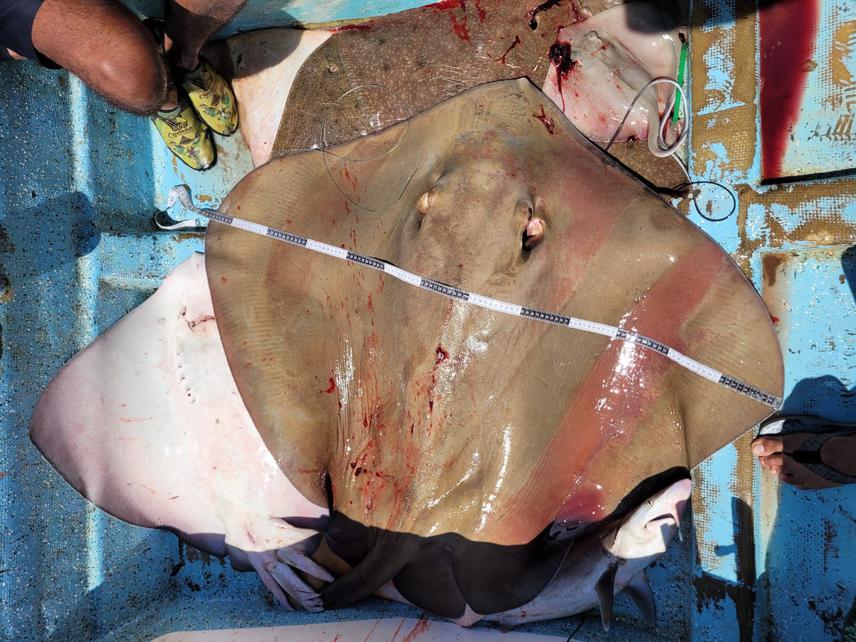Hugo Sánchez Gómez
Biological and socio-economic aspects of elasmobranch fisheries are key features to achieve successful management plans for these species. Although research and conservation efforts focused on cartilaginous fishes have been increased in Mexico during the last years, there are still many localities which lack of this kind information. This is especially true for small-scale artisanal communities, which are often located in remote zones. As artisanal fisheries are dynamic and complex, it is important to understand their local challenges and established appropriate management actions according to the species present in the area and the community necessities.

Hypanus longus and other elasmobranchs caught by artisanal fisheries, photograph taken during one of the exploratory trips. Note the H. longus embryo. © Alejandro Esquivel Vieyra.
Hence, the aim of this project is to contribute to the conservation, local management and awareness of elasmobranchs in Puerto Vicente Guerrero, an unstudied but important artisanal fishery community. This will be realized by 1) assessing artisanal elasmobranch fisheries to establish a baseline for future studies by recognizing the species composition, their abundances and seasonal distribution; 2) realizing interviews to fishermen to recognize their socio-economic needs, concerns, as well as their perspectives towards current policies and preferred conservation strategies; and 3) give workshops to fishermen in order to increase the awareness in sharks and rays, and to improve the communication between scientist, conservationist and local people.
During our explanatory field trips, we detected a relative high presence of smooth hammerhead (Sphyrna lewini) and silky (Carcharhinus falciformis) juvenile sharks. If work as desired, this project may help to the increase the local recruitment of these species. In addition, this project may help to determine the presence and abundance of other species in the zone and how they are being affected by fisheries. Finally, empowering the fishermen community may increase the vigilance in the zone, which may be useful to reduce the illegal fishing practices and will open the door to explore other sustainable activities.
Header: Alejandro Esquivel Vieyra (team member) measuring a juvenile smooth hammerhead (Sphyrna lewini) during one of the exploratory trips. © Ulises Pech Amado.